/Dev TFT: Cyber City Learnings
Cyber City download complete; Learnings upload initiated.
Because keeping TFT fresh and interesting is so important, we’re always trying new things, whether that’s a new set mechanic, an innovative 5-cost, or an item overhaul. But with exploration comes success, failure, and everything in between, so let’s dive into all that and more.
Lastly, TFT is quite large, so we’re going to be calling on more friends from across the team to help us cover more of our game.
Alright, let’s hop into a TL;DR then get right into it!
TL;DR: We’re going to dive deep into our Cyber City learnings on the following topics:
Hacks: Hacks were a successful Set Mechanic that introduced meaningful strategic choices and system exploration, though their impact varied by implementation. With more time, we would have focused more on the Hacks that added strategic decision-making, autonomy, and fun.
Loot Distribution: Hacks brought a ton of loot to TFT and it took us a while to get loot and general budget inflation in check, but we now feel we’re in a better place for future sets!
Reprints: The overuse of recent unit reprints undermined the set’s freshness, and while the choice was meant to ease new player onboarding, we’ve learned that preserving novelty is far more important.
Prismatic Traits: In K.O. Coliseum, we’re radically reworking how Prismatics activate. If successful, this could reshape their role in future sets.
Patch 14.5 Item Overhaul: Patch 14.5’s item updates laid essential groundwork for future systems, and while gameplay landed well, we missed the mark on global communication—especially around changes to beloved items like Rageblade.
The 5-costs of Cyber City: Cyber City’s 5-cost champions delivered some of our most creative and satisfying designs yet, and while a few fell short, the successes offered key lessons for the future.
Revival: Remix Rumble: Remix Rumble showed that mixing familiar systems with fresh mechanics and strong thematic energy can make Revivals feel both nostalgic and new—breaking records while offering players more ways to explore and experiment.
Hacks
Hacks were a great vehicle that allowed us to explore various existing systems by adding more variability, and when at their best, strategic decision-making. While generally successful, the true value of Hacks depended on the Hack in question. Things like the 1v2 Augment Hack (introduced by Designer Matt Dunn in our Dev Drop image below), to split or not to split, and (once reworked) choose a Golem were all great Hacks. Some Hacks that came up short were the gold bribes for Augments or the get more loot/gold Hacks that led to inflation without a puzzle or strategic decision. Finding more ways to create choices that you don't typically have between 'A' and 'B' is beneficial for TFT in the long run.
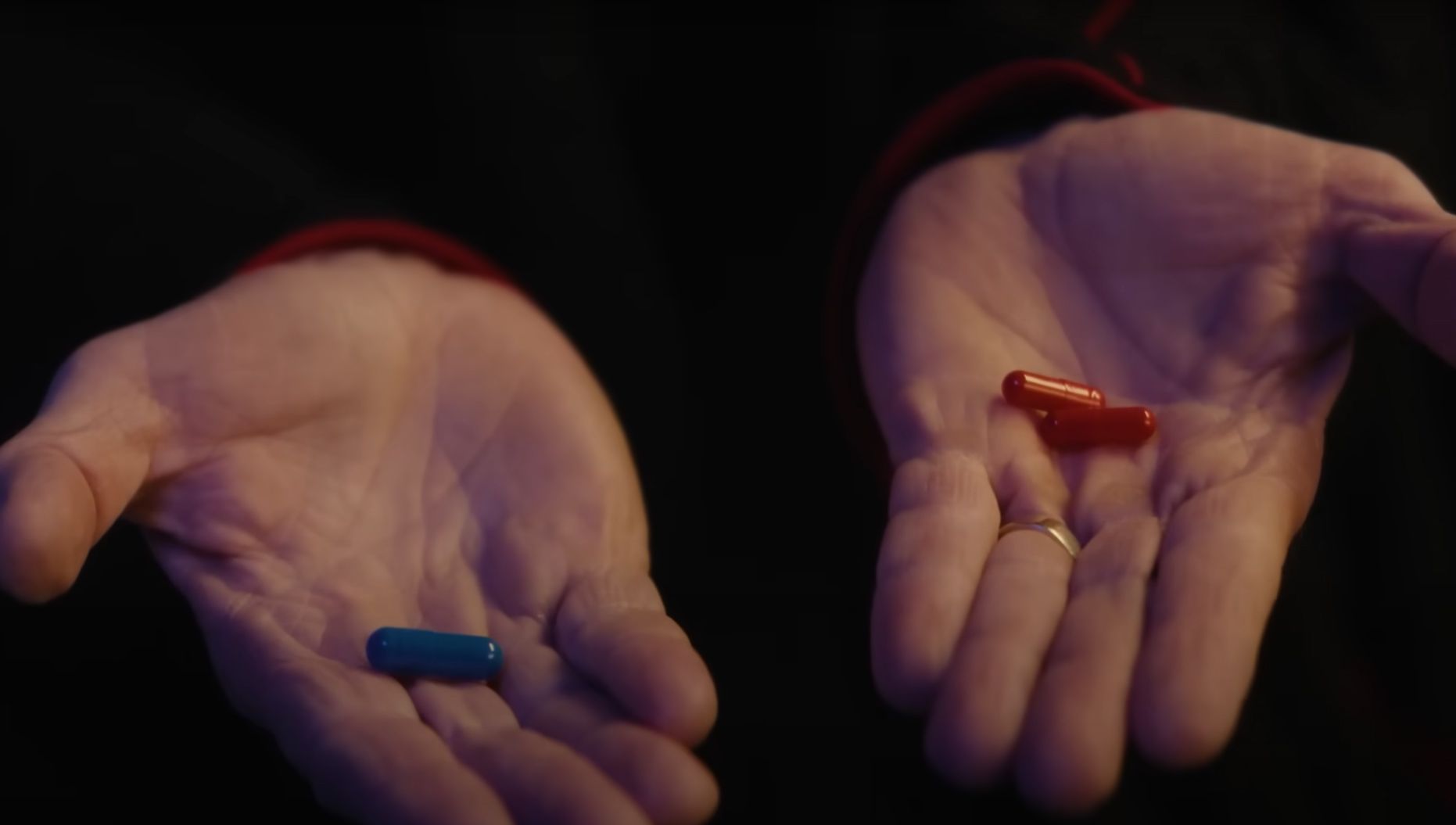
As a Set Mechanic, we’re happy with Hacks as they allowed us to explore our systems and add decision making. Plus, they synergized nicely with our thematic. But more importantly, we’re happy that most of our players were happy with them as well. While Cyber City was not without a few pain points, Hacks were rated consistently positive amongst our surveyed players, scoring similar to the Treasure Dragon (which happened to be a Hack we brought back) of Uncharted Realms. All that said, we still wish we had honed the mechanic a bit more. Given infinite time to explore and test, it would have been better for us to double down on the Hacks that were well-liked, and explore more with the fun ones that revisited past mechanics like Black Market Augments, Tome of Traits, or the aforementioned Treasure Dragon.
Loot Distribution: Too Much to Too Little
In Cyber City, we experimented heavily with loot distribution, testing different minimums and maximums. At launch, Cyber City’s Hacks introduced far too many resources, creating loot-heavy games that took two full patches to bring under control.
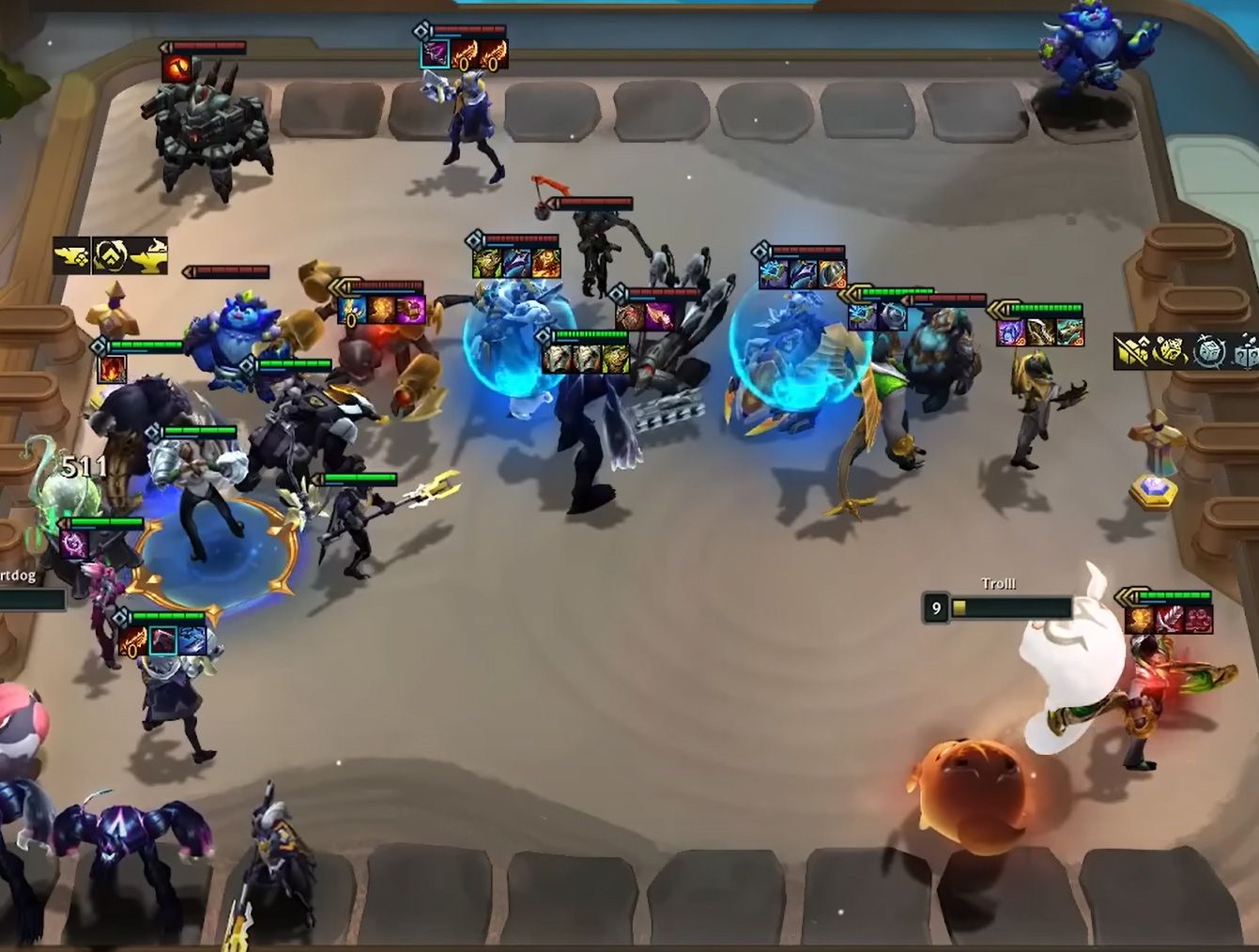
But when we got the highs in check, we started seeing the opposite problem. Some Opening Encounters that don’t add extra loot (shoutout to Golden Gala) were leaving lobbies so short of resources that certain comps couldn’t function. Imagine trying to play Vanguard Marksmen: you hit a couple early units, maybe grab a trait-linked Augment, and you’re all-in on the plan. But then Krugs shows up, drops nothing, and suddenly your whole comp falls apart—not because you misplayed, but because the items just... didn’t show up. The risk you’ve taken, committing to an item-heavy comp, has not been rewarded, and it’s not your fault, because there’s no actual way to predict item distribution.
Item distribution systems provide variance, but you can’t plan for that variance since you have no way of knowing how many items appear in each game. At the same time, TFT’s total variance budget has grown—Augments, Opening Encounters, Set Mechanics—there’s already a lot of unpredictability. So, in patch 14.6, we made the call to reduce variance in loot drops, raising the minimum item and orb drops, which while making Encounters like Scuttle Puddle and Crab Rave feel extra packed with loot (especially when combined with Cyber City Hacks), set us up for a better average loot distribution for TFT’s future (we’re looking at you K.O. Coliseum and beyond). Long term, we think lowering the variance in item distribution not only makes playing competitively more consistent, but also allows us to maintain the variance in frankly more fun and interesting places where you have more control.
Reprints
Our biggest source of pain for players in Cyber City was the amount of unit and trait reprints. Generally in the past, we’ve had success when we take a 4-cost and bring it into the 3-cost space while also tuning it down a bit. For Cyber City, we didn’t really do this. Instead, we recycled some champions from the previous set, Into the Arcane as low-cost reprints. Morgana and Zyra were 1-cost reprints that were slight variations of their previous appearances.
We also did this with traits to an extent. Street Demon was effectively a K/DA reprint with a twist, and Divinicorp was very similar to Guild and Heavenly. On top of that, many class traits like Bruiser, Vanguard, and Marksman returned shortly after appearing in recent sets. While we do expect certain class traits to recur regularly—since they help form accessible tank and carry archetypes—the cumulative effect of repeated units, traits, and classes diminished the set’s sense of novelty.
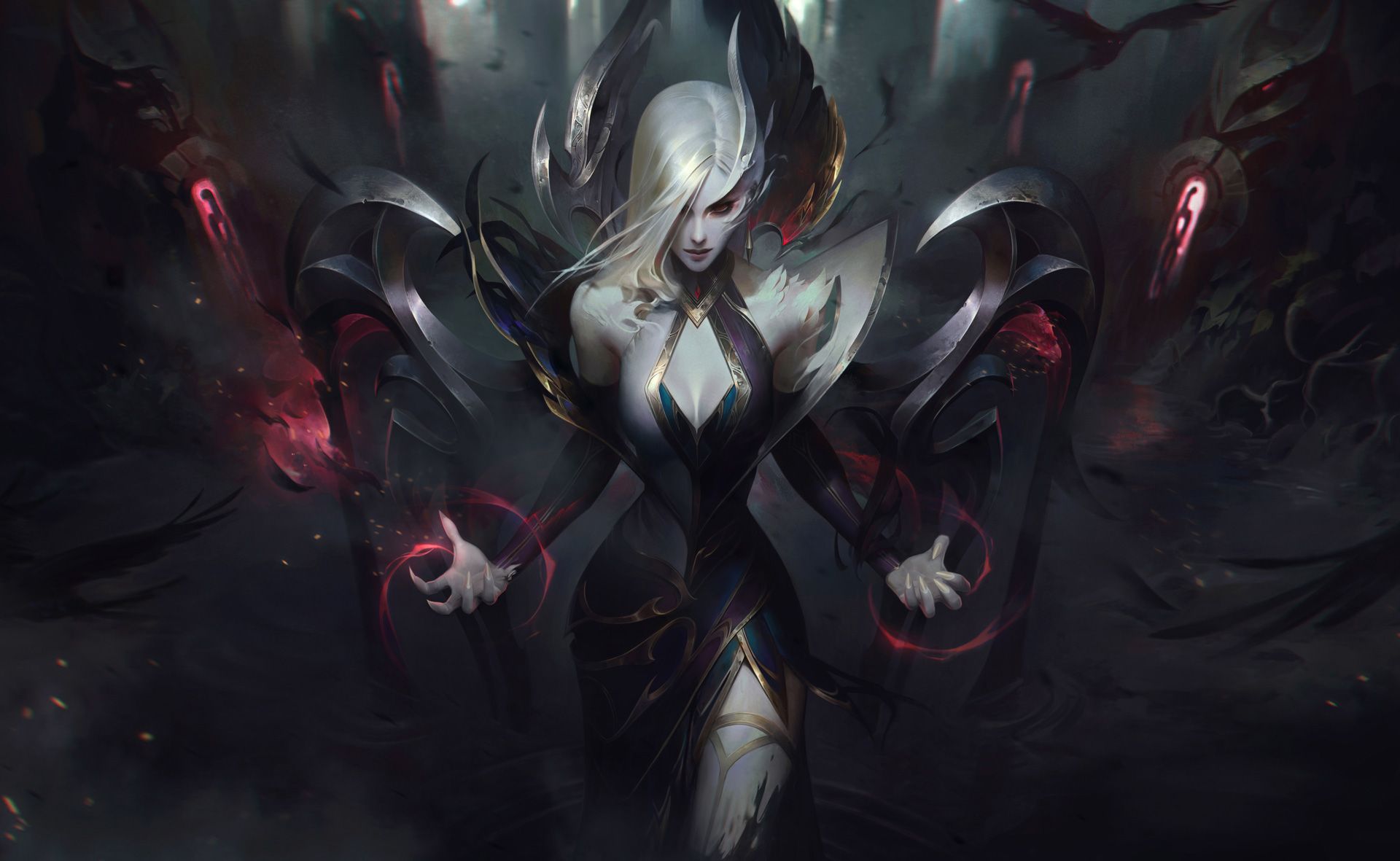
So why’d we take this risk in the first place? At the risk of pulling back the curtain too far, this decision was made on a logical and strategic basis. With Into the Arcane, we expected to attract more than a few new players into our lovely and deeply strategic game. So our thesis for Cyber City was that by returning some recent Into the Arcane units/traits, we’d soften the transition from one set to another for our new players. So we tried that, but it didn’t work out as well as we’d hoped. We can’t say for certain if it would have landed even if we changed the variables, maybe a new set is best-suited to just contain entirely new traits & units. But we can say for certain that novelty and change are important for making a set feel fun and varied. Going forward, while reprints will remain a part of our toolkit, we’ll use them more selectively and with greater time between appearances.
Prismatic Traits
We’ve been using the same approach to Prismatics for a while now: requiring players to hit +2 or +3 of a specific trait—an intentionally difficult goal—in order to unlock a massive power spike. These high moments that Prismatics provide are good for the game, but knowing someone is going to inevitably hit them with a lucky Emblem and Trainer Golem (or a similar combo) at Stage 2-1 is not great for a lobby’s morale.
With K.O. Coliseum, we’re trying something different. The way Prismatics activate will change & move away from just collecting a bunch of emblems. We’ll talk more about this soon, but for now we’ll leave you with a note that’s always applicable. As with all our explorations, if this new approach doesn’t work out, we can always revert it, but if players like it & it accomplishes the goals we’ve set out, then it could show up again!
Patch 14.5 Item Overhaul
In patch 14.5, we overhauled a few items. Here we’re going to get into the long-term thinking as to why we did this and how it landed, but if you want to learn more about the details of why we changed each item the way we did you can always refer to our blog about it here.
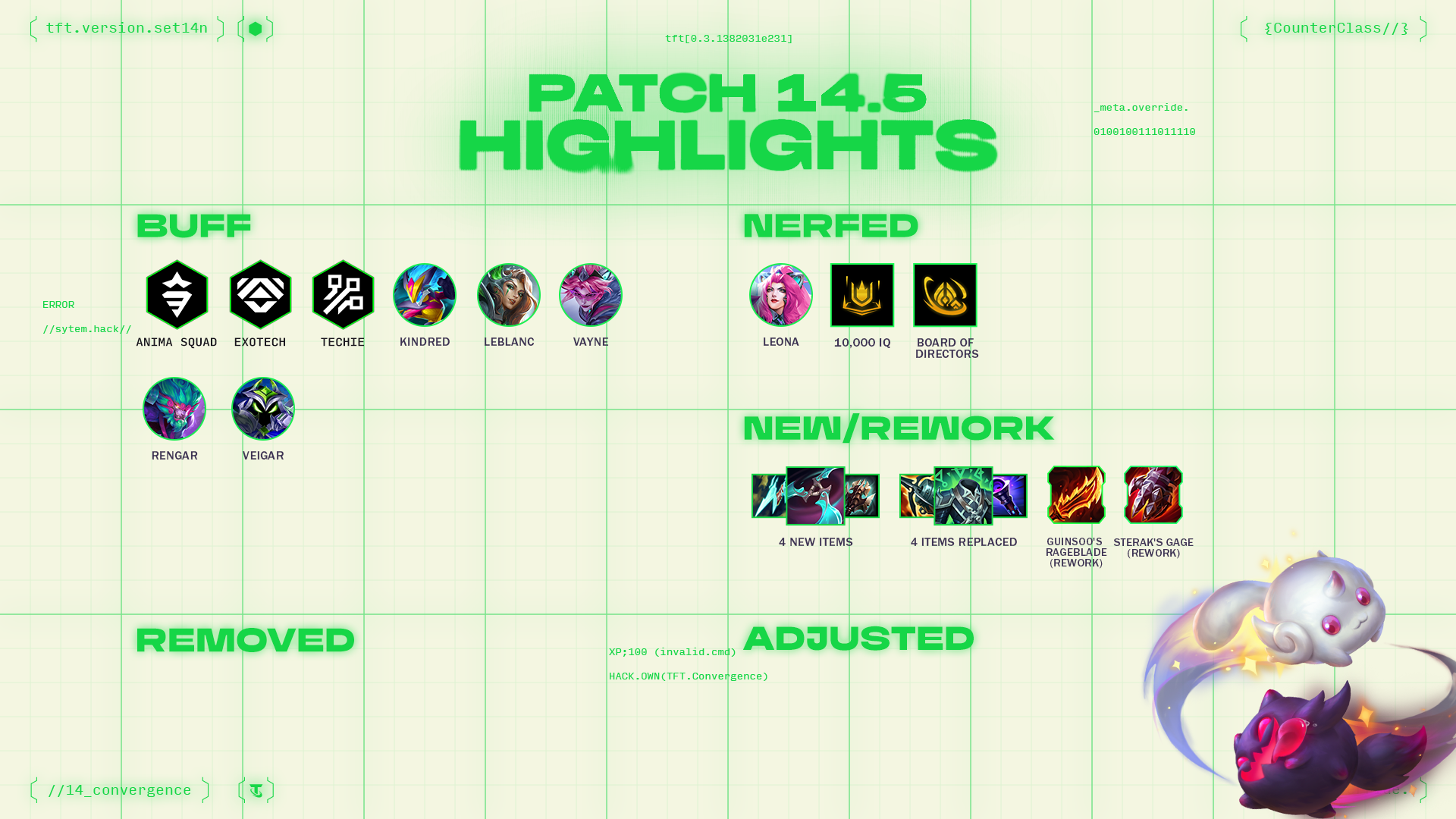
Part of game development, especially live-service game development, is knowing where you are going and figuring out when to implement changes. With a larger change that impacts items and more coming in K.O. Coliseum, we decided to update a few items early. Without getting too spoilery, a new systems update (that we alluded to in our last Learnings article hint hint), required us to rework most of our items.
Editor’s note: Not all of our items will be changing with the next set and they won’t be changing in their core function; instead, they’ll have small adjustments to allow them to better fulfill their fantasy or make sense within our new system.
Rather than waiting and shipping every item change at once, we rolled out a batch early in 14.5. Our goal with these was that if you didn't read the patch notes, or the article about the changes, or watch one of our few videos that we launched during this time, you’d actually be fine—because none of the changes dramatically shifted the way an item is used.
So, how did this land? As far as core items go, Sterak’s Gage was our only miss, landing a bit too strong, but the rest of the core items landed in a well-balanced state. Our Artifacts landed a tad weak across the board, however, except for Flickerblade, which let it rip too hard.
While the gameplay side of this update landed well, we missed the mark in a major way when it came to communication. Many players—and our balance/design team—are happy with the new Rageblade. It’s more versatile across champions and avoids the multiplicative scaling that’s been a long-standing balance headache. But even when the change is good, making adjustments to a beloved item without proper heads-up just isn’t the way to go.
Changing a fan favorite is always going to be tough, but in this case, we compounded it by failing to communicate why the change was happening—especially in regions where we couldn’t localize that messaging in time. That’s on us. We’re already taking steps to get ahead of situations like this: working earlier, coordinating across teams, and making sure the “why” behind major changes makes it to players.
The 5-costs of Cyber City: Threats with Hyper-Novel Mechanics
Cyber City had some amazing 5-costs; the team really knocked them out of the park. And while a lot of our postmortems focus on what went wrong, this time we actually want to start with what went right. Because we’re allowed to learn from our wins too.
With our 5-costs, we pulled from both past successes and fresh ideas, and made sure each one stood out.
Renekton took the core of the “Hunger for Power” Anomaly from Into the Arcane and turned it into a full-blown champion, with a satisfying ability and builds that created Renekton fantasies we didn’t even know could exist: Long Croc.
Aurora borrowed a little from Thresh and Syndra, 5-costs of sets past, but added a bench-attacking twist that made her feel uniquely strong as a safe scaling carry.
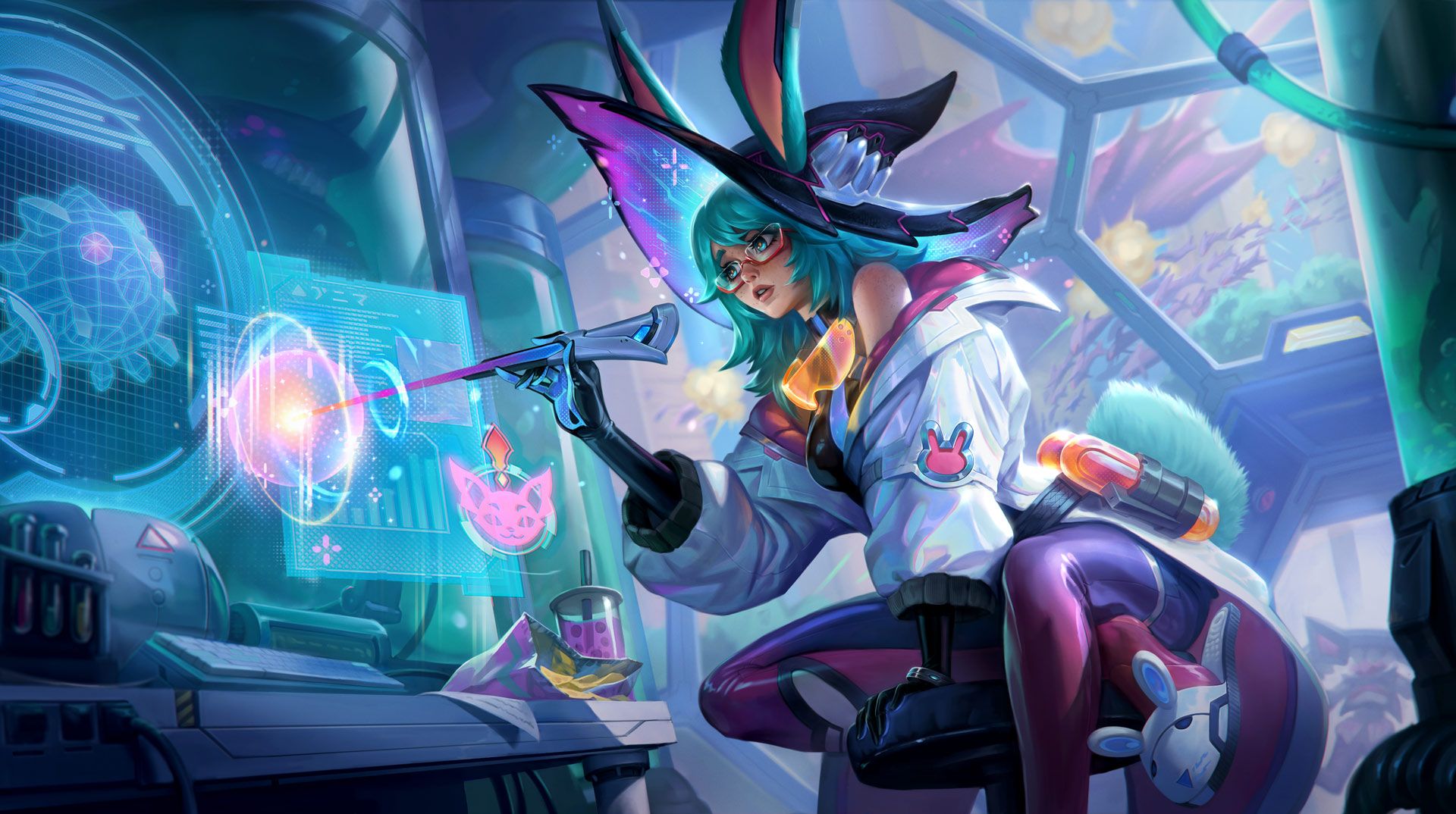
Urgot was, in the nicest way possible, a loot-vomiting garbage disposal. When is that not fun?
Zac brought a new mechanic that had you gleefully collecting blobs during roll downs, perfectly fitting with our theme, while only occasionally causing you to miss a critical unit amidst the chaos of rolling too fast. Don’t worry, it’s happened to all of us.
And last, but not least, Garen brought a brand-new mechanic that let us do something we’d never done before—granting trait bonuses to champions without needing to hold an Emblem. That opened up all kinds of late-game capping and carry flexibility with things like Boom Bot Twisted Fate.
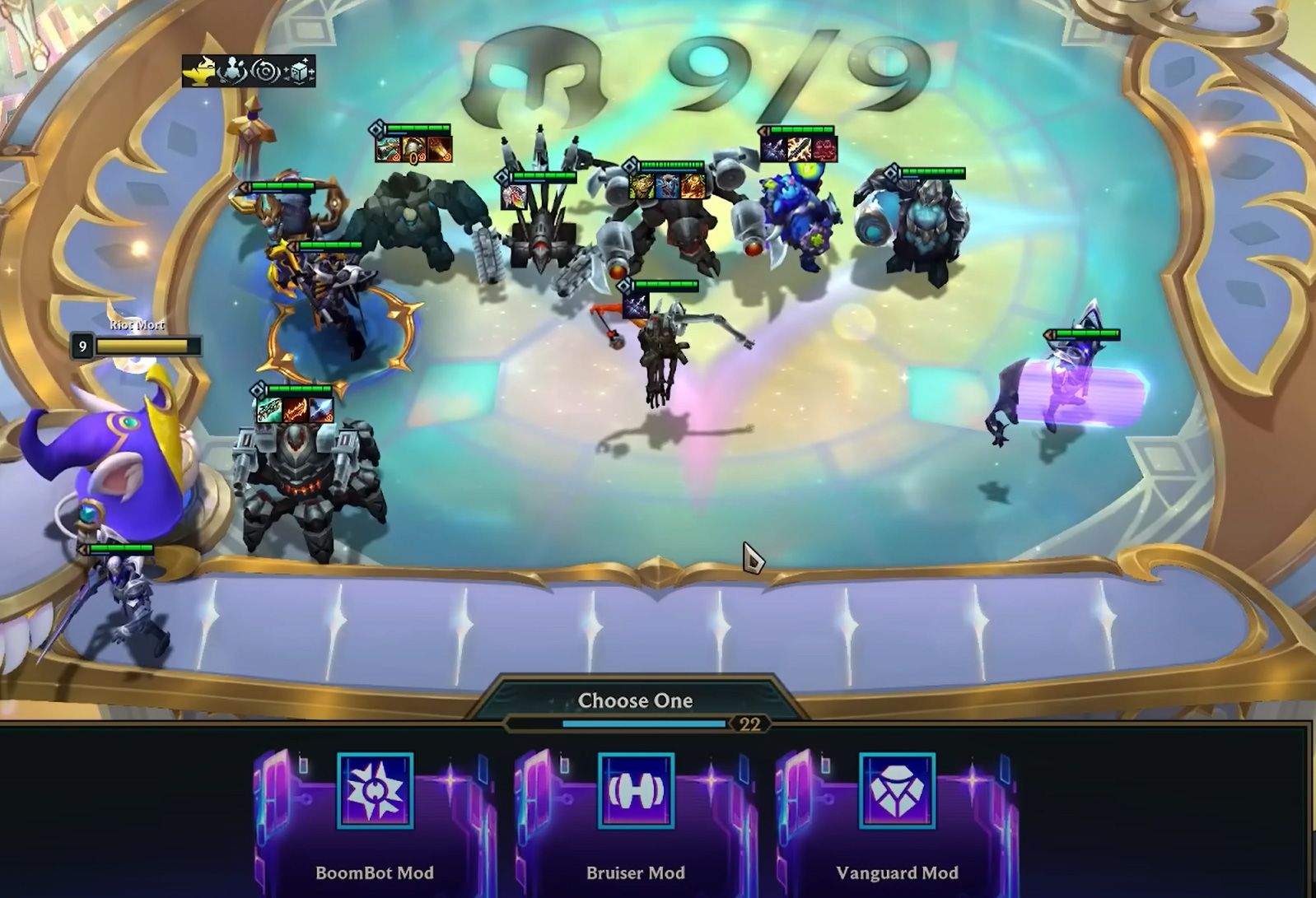
We love these champs. They were bold, memorable, and very Cyber City.
But not every 5-cost landed quite so cleanly.
Kobuko was a bit overcooked. We had a fantasy that he would be a boss that transitioned into phase two. He dropped overloaded and overtuned—and when we reined him in on the balance side of things, none of his parts really shined. So we reworked him entirely. In hindsight, we should’ve trimmed back earlier and focused his power into a more distinct identity.
Samira had the spectacle, but not the impact. She just didn’t stand out next to the rest of the cast. In a set with fewer superstar 5-costs, she might’ve had more room to breathe—but here, she felt flat.
Finally, Viego. Viego was interesting in that he had a summon of the strongest enemy he killed last round (or your friendly Golem), but in doing that, plus a big AOE damage ability, we ended up having to lower the power of his summon substantially to find a balanced state for him.
That’s not to say any of these champions were a huge miss; these are just a few notes to help us think about 5-costs in the future.
Revival: Remix Rumble
Hey everyone—Riot Xtna here, Product Manager on Revivals (and a few other things behind the curtain). With Revival: Remix Rumble wrapping up, I wanted to take a moment to talk about what worked, what surprised us, and how we’re thinking about the future of Revivals.
Let’s talk bag sizes first! One of the biggest swings in Revival: Remix Rumble was bringing back shared bags—and the response was clear: players liked the extra game-to-game variance. We also trimmed the 4- and 5-cost pools compared to past shared but expanded bag Revivals. Why? In earlier revivals, the late game often tunneled into “can I hit three-star 4 and 5-costs,” and while that’s always going to be exciting (we see you, Choncc’s Treasure), we didn’t want every Revival to become that. For Revival: Remix Rumble we still allowed those high-roll fantasies—but also made room for players to chase other peaks, like reuniting iconic comps or making a brand new comp with one of our new Augments.
Next up, themes. We’ve always prioritized theme differentiation when choosing sets to revive, but Remix Rumble proved how much novelty within a Revival can matter too. We knew players wanted something fresh to play while Cyber City was live, and the music, Headliners, and the return of Heartsteel were exactly the kind of energy boost needed to find a solid alternative queue to your other favorite queue. And with Revival Ladder being a bit less intense than our standard Ranked queues, it also meant players were happier exploring new combos and seeing just how far they could take Heartsteel. All this record-dropping had the Revival record-breaking, especially in China, where the Revival brought over the biggest increase in playership of any TFT set revival to date.
We’re still learning with every Revival, and your feedback shapes a lot of our decisions—so thanks for jumping in, finding the perfect Headliner, and yes, chasing the biggest Heartsteel cashout you possibly can!
There it is, another Learnings article in the books—sheesh, if you combine all of these it could quite well be a book. These articles could never be written alone so, thanks to the entire team that’s helped here, or in the set, and thanks to the countless players that have helped shape TFT throughout all the years. We’ve got plenty more to share soon with our next set, K.O. Coliseum. Til then!